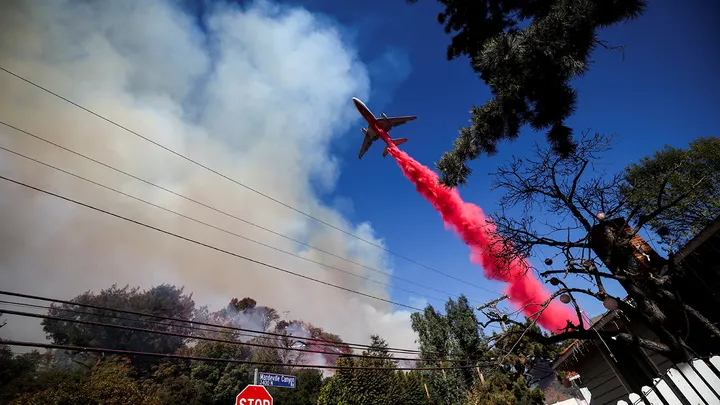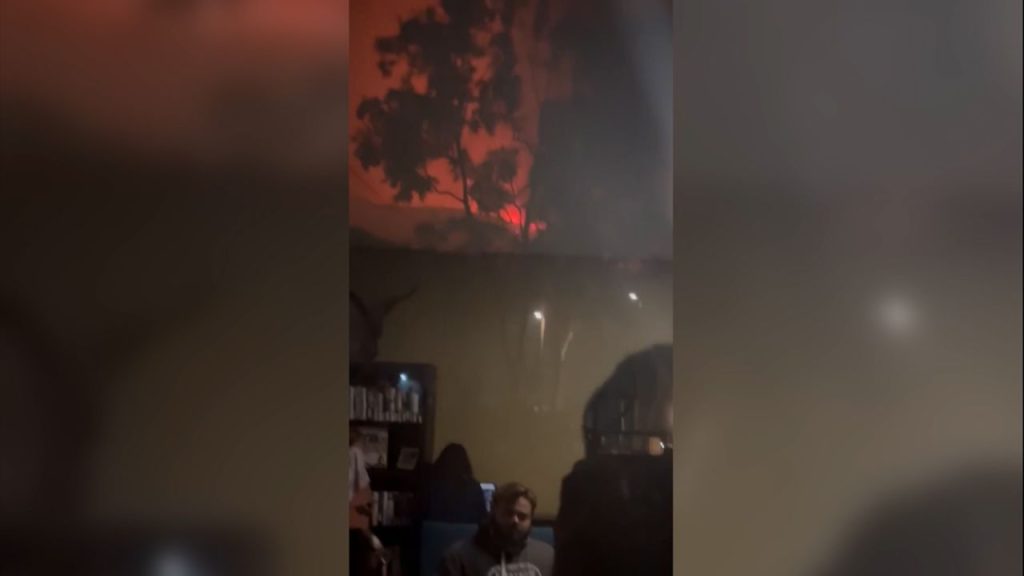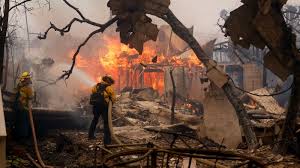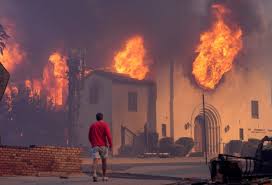Massive Brushfire Threatens NYC Suburbs, Spreads to New Jersey
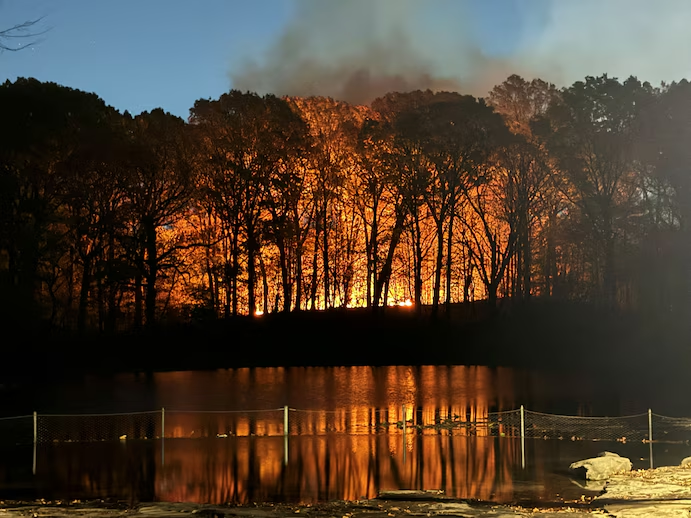
A massive brushfire that ignited in the suburban areas of New York City is rapidly spreading, threatening local communities and pushing officials to issue emergency warnings for both New York and New Jersey. The blaze, which began earlier this week in the dense woods and brush near the city’s outskirts, has forced evacuations, disrupted transportation, and prompted a large-scale firefighting response.
The fire, which is currently burning out of control in both New York and New Jersey, has become one of the largest wildfires in the region in recent years, fueled by dry conditions and strong winds. As of Friday morning, the fire had spread to several hundred acres, with emergency crews battling to contain the flames. Authorities are concerned that the fire could continue to spread, given the forecasted dry and windy weather over the weekend.
Evacuations and Closures
Authorities have issued evacuation orders for several neighborhoods in the areas surrounding the fire’s epicenter. In New York, communities in Queens and Staten Island are facing immediate risks, with authorities urging residents to leave their homes as a precautionary measure. New Jersey residents in areas bordering the fire zone are also being told to evacuate if conditions worsen.
In addition to the evacuation orders, officials have closed down several roads, including major highways, to allow firefighting crews access to the blaze. Local schools have canceled classes, and some businesses in the affected areas have shuttered in anticipation of further spread.
Firefighters from both New York and New Jersey, as well as federal teams, have been working around the clock to contain the fire. Several helicopters are dropping water and fire retardant on the flames, while ground crews are focusing on building fire breaks to prevent the fire from spreading into more densely populated areas.
The blaze has also disrupted air travel, with the smoke from the fire drifting into parts of Manhattan, causing poor air quality and reduced visibility. Several flights at major New York airports have been delayed, and officials are urging people to limit outdoor activity due to the smoke, which has reached hazardous levels in some areas.
Causes and Concerns
The fire’s origins remain unclear, but authorities suspect that human activity may be responsible, either through accidental ignition or arson. Firefighters have been investigating the area where the fire started, which is known for its dense underbrush and dry conditions. Investigators are also looking into whether the blaze could be linked to other fires reported in nearby areas in recent weeks.
Experts say that the fire’s rapid spread is exacerbated by a combination of factors, including high winds, extremely dry vegetation, and unusually warm temperatures for this time of year. The region has experienced a prolonged drought, leading to an increased risk of wildfires.
“This is an unprecedented fire for this time of year,” said Kevin Hale, a fire expert with the National Weather Service. “The combination of dry conditions and winds has created a perfect storm for wildfires to ignite and spread quickly. We’re urging everyone in the affected areas to take the necessary precautions and stay alert.”
The recent outbreak of wildfires in the New York metropolitan area is part of a broader trend of increasing wildfire activity in the northeastern United States, which experts attribute in part to climate change. The region, traditionally less prone to large-scale wildfires, has seen a surge in the number and intensity of wildfires in recent years.
Rising temperatures, prolonged droughts, and more extreme weather events linked to climate change are creating conditions that are more conducive to the ignition and spread of wildfires. As a result, areas that have historically been less vulnerable to these types of fires are now experiencing an increased risk.
“In the past, wildfires in this area would have been rare,” said Dr. Emily Thomas, a climate scientist at Columbia University. “But with the changing climate, we are seeing more frequent and intense fires across the region. We need to continue to invest in fire prevention strategies and increase public awareness about the risks.”
The growing frequency of wildfires in the Northeast has prompted calls for more proactive measures to reduce the risk of fire, including better forest management, firebreaks, and public education on fire safety. The recent fire serves as a stark reminder of the need for cities and states to prepare for the growing threat of wildfires, especially in the face of changing climate patterns.
As the fire continues to burn, authorities are working to protect lives and property while also assessing the environmental damage caused by the blaze. Firefighters are making progress in containing the fire, but challenges remain, especially given the dry conditions and unpredictable winds.
Local officials are urging residents to stay informed through official channels, monitor air quality updates, and follow evacuation instructions if necessary. The fire’s impact on the region’s infrastructure, air quality, and wildlife is expected to be significant, but officials remain hopeful that continued efforts will bring the fire under control.
With more wildfires expected as climate conditions continue to shift, experts are warning that the Northeast must be better prepared for the growing risk of fires. For now, the priority remains protecting communities and preventing further devastation from the ongoing blaze.


